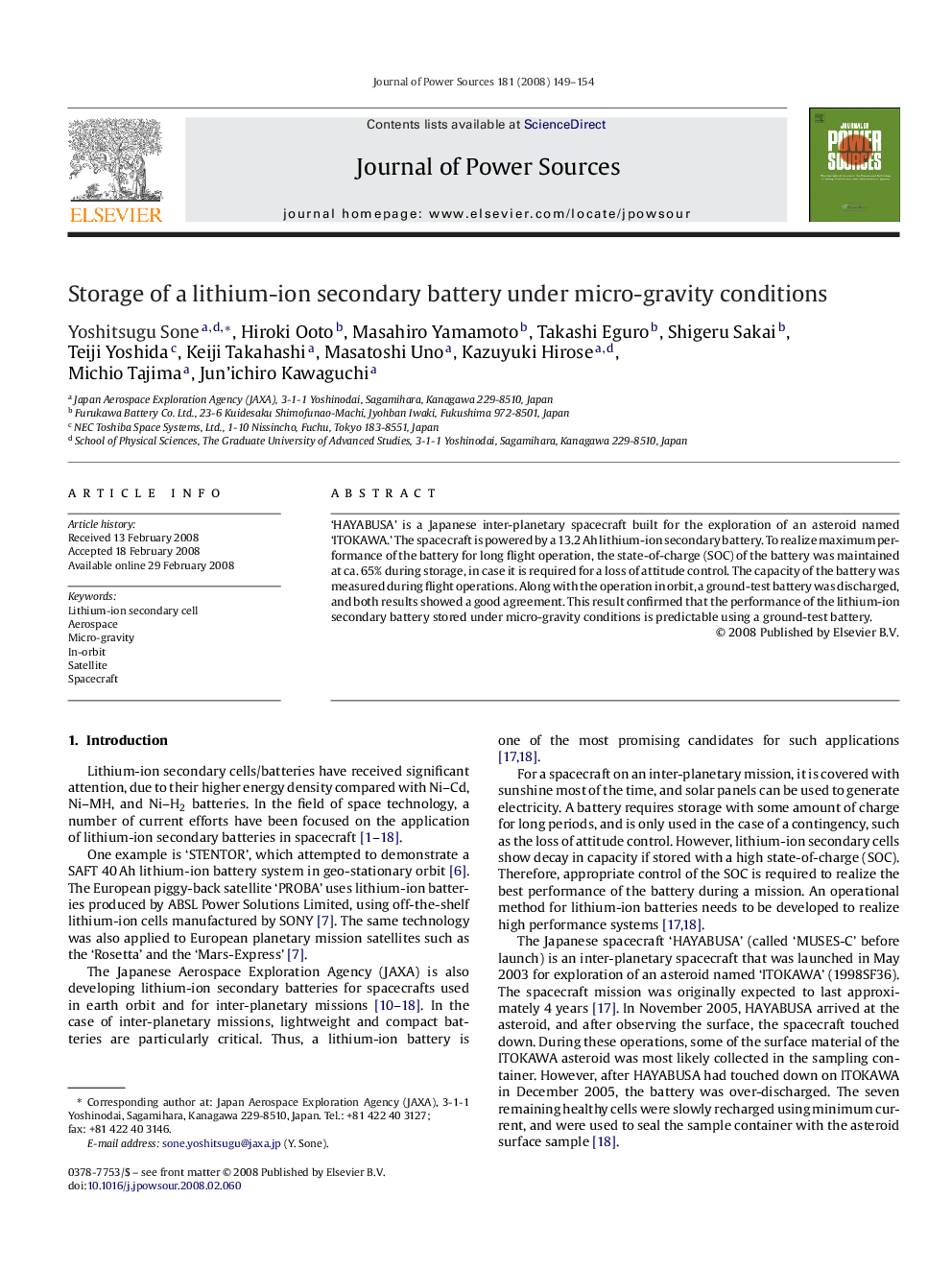| Article ID | Journal | Published Year | Pages | File Type |
|---|---|---|---|---|
| 1285494 | Journal of Power Sources | 2008 | 6 Pages |
Abstract
‘HAYABUSA’ is a Japanese inter-planetary spacecraft built for the exploration of an asteroid named ‘ITOKAWA.’ The spacecraft is powered by a 13.2 Ah lithium-ion secondary battery. To realize maximum performance of the battery for long flight operation, the state-of-charge (SOC) of the battery was maintained at ca. 65% during storage, in case it is required for a loss of attitude control. The capacity of the battery was measured during flight operations. Along with the operation in orbit, a ground-test battery was discharged, and both results showed a good agreement. This result confirmed that the performance of the lithium-ion secondary battery stored under micro-gravity conditions is predictable using a ground-test battery.
Related Topics
Physical Sciences and Engineering
Chemistry
Electrochemistry
Authors
Yoshitsugu Sone, Hiroki Ooto, Masahiro Yamamoto, Takashi Eguro, Shigeru Sakai, Teiji Yoshida, Keiji Takahashi, Masatoshi Uno, Kazuyuki Hirose, Michio Tajima, Jun’ichiro Kawaguchi,
